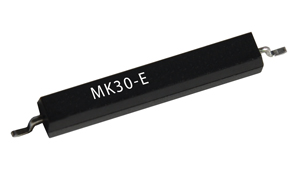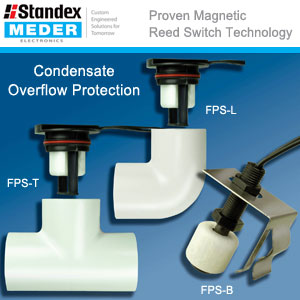Standex-Meder Electronics has released its 3-dimensional magnetic mapping capabilities for reed sensors. This process allows designers to more accurately place sensors and magnetic components within a system, thus eliminating any issues that may result in faulty operation.
 Standex-Meder Electronics conducts 3-D magnetic mapping by incrementally measuring the reed sensor’s closure and opening points as it enters and exits the influence of a magnetic field. This information is then analyzed, allowing the user to visualize the magnetic field in three dimensions. Understanding the interacting magnetic fields allows designers to better position the magnet and sensor in the system for optimal operation. 3-D mapping also helps designers adjust the magnetic sensitivity of the reed sensor and/or the magnet’s size and strength.
Standex-Meder Electronics conducts 3-D magnetic mapping by incrementally measuring the reed sensor’s closure and opening points as it enters and exits the influence of a magnetic field. This information is then analyzed, allowing the user to visualize the magnetic field in three dimensions. Understanding the interacting magnetic fields allows designers to better position the magnet and sensor in the system for optimal operation. 3-D mapping also helps designers adjust the magnetic sensitivity of the reed sensor and/or the magnet’s size and strength.
The ability to know where the key operating points are is critical to sensor applications, because it allows designers to properly position the magnet and sensor well within appropriate guard bands and avoid tolerance issues. It is particularly useful in applications using more than one reed sensor or more than one magnet. For applications in which ferromagnetic material like iron, steel, nickel or cobalt are present in the area where sensing takes place, 3-D modeling becomes quite extensive and unpredictable, so magnetic mapping is the only way to know for sure where the boundaries are.
In addition to ensuring operations are well within the magnetic envelopes to avoid tolerance issues, 3D magnetic mapping helps designers optimize the sensor and magnet components, which can reduce costs.



